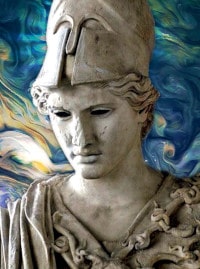1975, 127 minutes
Yes, another slavery movie. But, this is not a weird fantasy like Django of Gone With The Wind, or a white wash like 12 Years a Slave or Roots, which had most of the brutality bleached out of them. Mandingo is a horror movie, and is the most accurate portrayal of chattel slavery in the United States on film outside of 12 Years A Slave, which was accurate up until the inhuman point at which postmodern American viewers would disconnect. Below I consider Mandingo in two lights.
Ancient Times
The most interesting fact about early modern colonial slavery in the Christian World is that it was a resurrection of the ancient Hellenistic and Roman forms of industrial bondage, that so effectively powered the ancient economy with human livestock that all of the wondrous inventions of Archimedes were mere toys, with no useful purpose. The only way in which chattel slavery differed from its ancient progenitor was in the belief that a certain race of person made an ideally moral choice for a slave as they had no ‘immortal soul’. This outlook is the logical outcome of a worldview based on the fusion of Christianity and mercantile colonialism, and made of this type of slavery such an abomination, as it mandated the most ruthless forms of child abuse from the moment of birth.
The film nicely portrays this in the form of slaves being named after ancient Greek and Roman heroes and literary figures. The sense—on the plantation that has the most scenes—is of poor, semiliterate Scotsmen trying to figure out how to act like an ancient Roman senator through the use and abuse of those under their power. The caught and condemned slave Cicero—played in 1970s Black Power fashion—alludes to the white slavery origins of his plight when he says his last piece as he is being hanged, “You peckerwoods was oppressed in your own land!...Afta’ ya hang me—kiss ma ass!”
Other aspects of life in a muscle-powered world are nicely evoked in the haunting acoustic blues, the many small tasks performed by human livestock such as fanning the master, and even swinging the paddle of discipline—which was the exact paddle design that was being used to beat school children in Western Pennsylvania in 1975!
A portrait emerges of a destitute, lonely world, where the rich are impoverished in many ways we might not consider, and where human kindness and the one timeless pleasure of sex are the only consistent refuge for the tormented soul of master and slave, who are both profoundly unfree. The place of alcohol is central and the film portrays its curse in such an environment well, through well acted dialogue in three distinct English dialects. Imagine being owned by poor, uneducated, superstitious drunks in poor health who spoke like so:
“She got twenty-four suckers”
“Does you craves to be free?”
“I’m gonna whoop that sucka right out a you!”
“You’re behavin’ like a Georgia [Scotch immigrant] bitch!”
The objectification of every person living under this system is brilliantly depicted by the Lucretia Borgia ‘mammy’ character when she greets her knew mistress [played by Susan George] with a declaration akin to that of a little girl receiving a new Barbie Doll, that she was thrilled, for she had not had a pretty little white lady to dress up and fuss over in some years.
NHB Prizefighting
Ken Norton was tapped as the tragic figure of Mede, the Mandingo slave bought by a lame young master to be his ‘fightin’ nigga’ as he was a perfectly sculpted athlete and a rising threat to the heavyweight crown of Ali. The two combats use some standard Hollywood stunt work, but for the most part, depict the type of unarmed combat engaged in by poor white trash of the Southland before the 20th Century, in which boxing is absolutely subordinate to grappling, biting and gouging.
There is slim evidence for this type of prizefighting between slaves—but it did exist. However, the master sanctioned bouts would have resembled ancient pankration more than this. The fights were used as a metaphor for the more brutal aspects of slavery [which was better served by the scene in which Mede caught Cicero for his master]. What we see in the fight between Mede and the Jamaican champion was the type of fight that occurred between poor whites of the same period, with Norton depicted as a lousy boxer, who resorts to methods that seem more like Rickson Gracie as Count Dracula than Tom Molyneux [an actual black slave prizefighter of the preceding period].
Summary
The languid scenery, the acoustic soundtrack, and the reaching tenderness of savage and ground down souls juxtaposed with the most lurid brutality make Mandingo a weirdly disturbing horror story that I suggest be viewed for what it is; an unflinching view of Mankind’s lot for most of civilized history, give or take a brutal convention or two.











